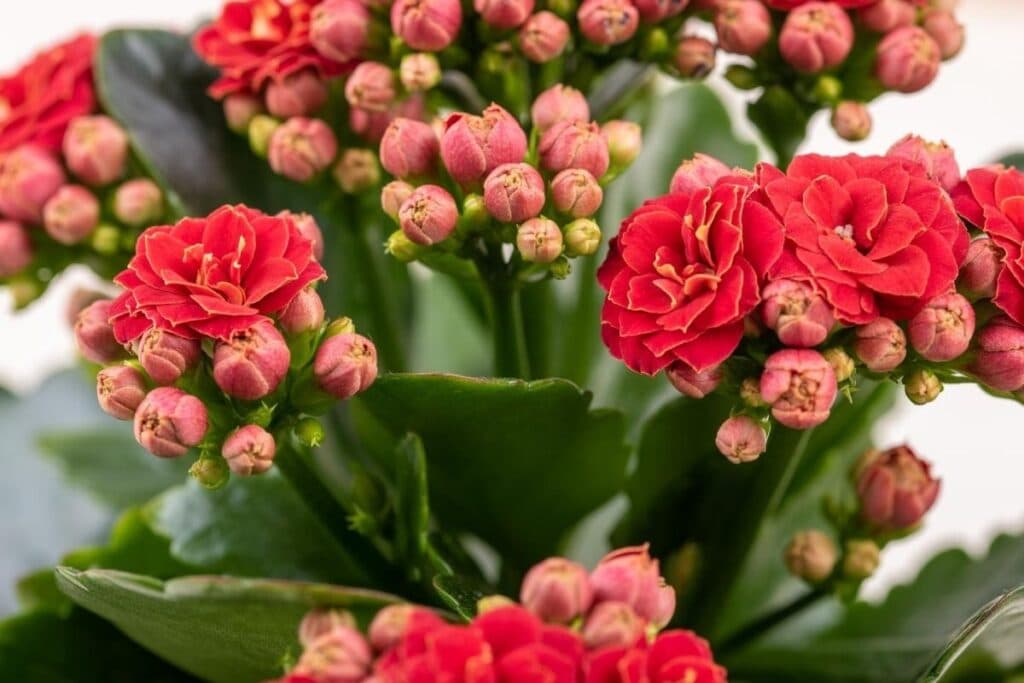Calandivas are also known as Kalanchoe. This lovely succulent plant has vibrant green leaves and colorful blossoms that look great as a houseplant! They prefer to be left alone, as they require minimum maintenance!
Calandiva belongs to the Crassulaceae family of flowers, and they can last up to six weeks from the moment they start flowering! They are also known for flowering throughout winter and spring.
Continue reading if you would like to know more about these succulent plants and how to take care of them:
Calandiva Plant Description
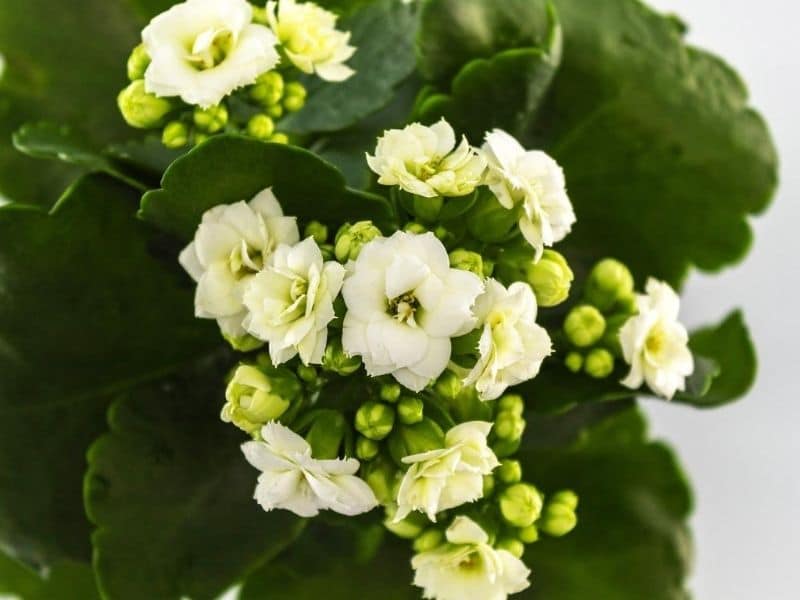
Some Calandiva plants will look like roses because they have many petals. In fact, they could have four, eight, 16, and even 32 petals in total! Calandiva can be found anywhere in the world.
Calandiva’s flowers can be orange, pink, red, white, burgundy, lilac, yellow, and cream, and they are usually very showy is why they are considered as a beautiful ornamental plant.
How to Grow and Care for Calandiva
Here are some tips regarding how to maintain a healthy Calandiva plant:
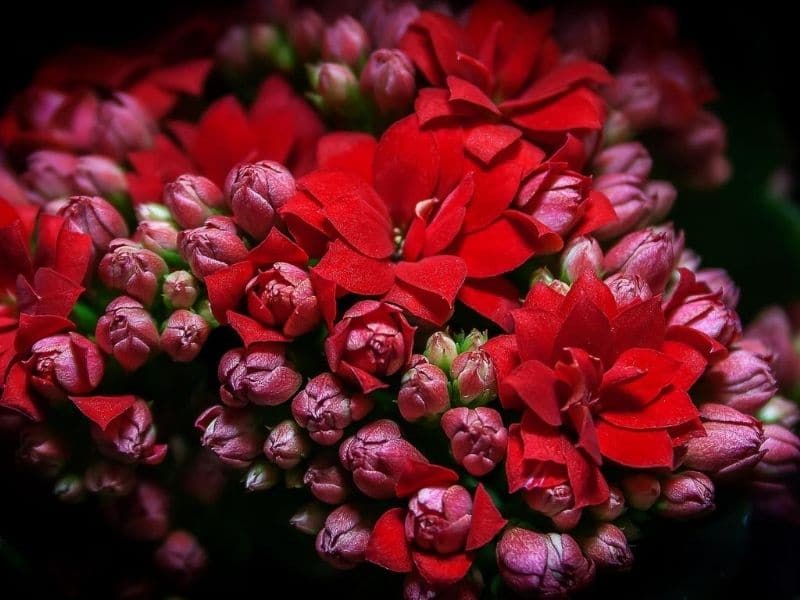
How Many Hours of Darkness and Light for This Beautiful Plant?
This flowering succulent is a low maintenance plant that requires the right amount of natural light. While it thrives in full sun, too much direct sun can result in burning of the leaves, especially during the winter months. In fact, during this time, it is advisable to provide the plant with filtered sun.
To achieve optimal leaf growth, the calandiva needs at least 14 hours of bright indirect light. A south facing window that receives direct sun during the later afternoon is an excellent spot for this plant. However, in cases where this is not possible, a low light area that receives indirect light for several hours a day can suffice.
It is important to note that calandiva kalanchoe has distinct light requirements compared to other succulents. While it can withstand some shade, exposure to long nights and lower light for prolonged periods can lead to poor growth and flowering. To avoid this, placing the plant in a spot that provides filtered or indirect light, preferably with some natural light, can help the plant thrive.
In late winter, when days are shorter, it may be necessary to supplement the natural light with artificial lighting to ensure the calandiva kalanchoe receives the least 14 hours of bright indirect light it requires. Overall, providing the right amount of natural light is crucial for the optimal growth and flowering of this beautiful plant.
Soil and Temperature Requirements for Calandiva Kalanchoe
As a long blooming succulent, calandiva kalanchoe loves an acidic or neutral soil; they also prefer well-drained soil because they cannot tolerate having a lot of water on the soil.
You could easily grow and maintain Calandiva outdoors; just make sure you put them in a protected area guarded against strong winds and too much rain. This will help prevent issues like powdery mildew.
If you grow this succulent perennial indoors, remember to keep things on the dry side. Well draining soil is absolutely essential. Choose a potting soil like succulent and cacti mix for the best results, as this will keep the soil moist enough for your rosebud kalanchoe without causing overwatering and soaking wet soil that can lead to issues like stem rot.
If you live in a cold area, it is advisable to grow them indoors. If this is the case, place them in an area where they can receive as much sunlight as possible, otherwise, they may be affected by the lack of sun.
If you choose to bring indoors your plant, keep the plant away from cold drafts and heat vents as well as harsh direct sunlight. Indoor plants may be more sensitive to these variables.
Water and Food Requirements
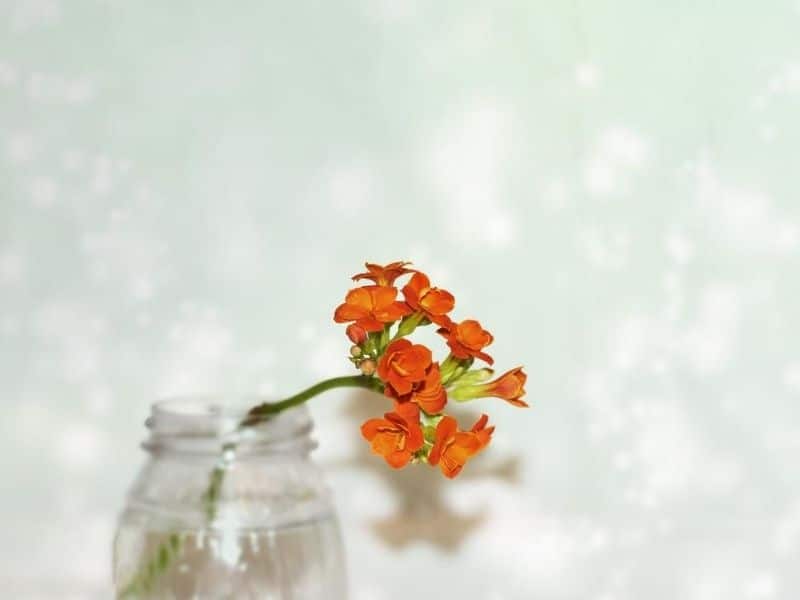
Calandiva will do just fine if you don’t overwater it. Because Calandiva is a succulent, it also means that they are very drought-resistant plants, so if you always forget to water your plants, consider getting a Calandiva!
Ideally, you should water it once a week, although if your house is humid and your environment is cold, you will need to make sure the soil is almost dry before watering it again.
On the other hand, you could apply an organic fertilizer once a month if your Calandiva is in a growing season. This way, you will be encouraging her to flower correctly.
Pruning Calandivas
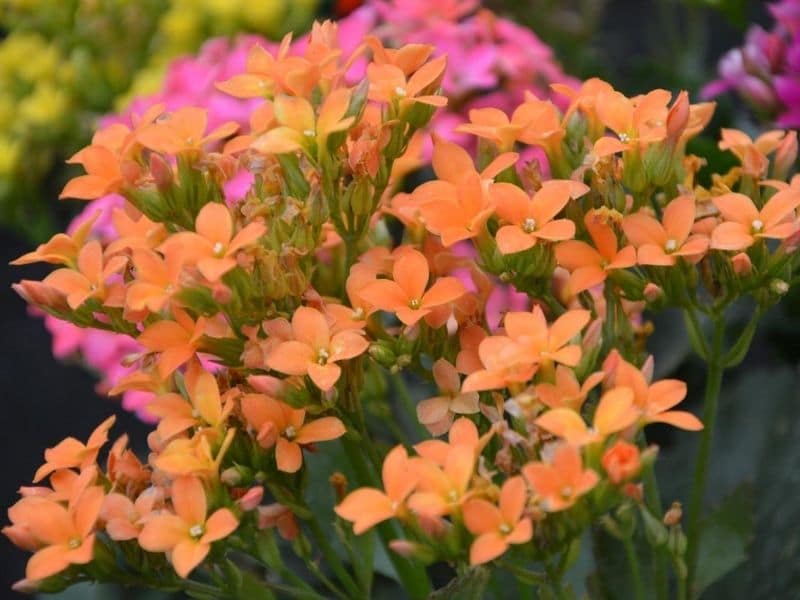
Don’t you worry! You will only need to do a simple pruning every now and then (for example, just at the end of the growing season); if you do this, you will make sure your flower will have a better shape in the future.
You could cut the tall stems that will grow above the already established leaves. If not, you could always take some small plantlets and then plant them directly on the soil outdoors or in a different container, this way you will be manually propagating your Calandiva.
Propagating Kalanchoe Calandiva
This is a slow grower succulent of the kalanchoe genus – the good news is that it can be propagated by stem cuttings. A bit tricky, but with the right approach and tools, this plant can produce more blooms during its flowering period.
First, you need to get a healthy plant. Make sure that the plant you are going to propagate is in good shape and free from any diseases. Using sterile scissors, cut back two to three sets of leaves from the stem. Be careful not to damage the stem while cutting.
Next, dip the bottom end of each stem cutting into rooting hormone. This will help the cuttings establish roots more quickly. Then, plant the cuttings in a well-draining soil mix and keep the soil moist for the next one to two weeks.
To promote flowering, put the planted cuttings in a spot with indirect sunlight. This will help the plant to produce buds and ultimately more blooms. Make sure to water the plant once every two to three days to maintain a moist soil environment.
After two to three weeks, you should see roots growing from the bottom of the stem cuttings. This indicates that the cuttings have established roots and can be transplanted to their new home.
Calandiva Pests and Diseases
Always wash your hands before, and after you prune your plants, otherwise you may be spreading plants’ diseases without even knowing it!
Sometimes Calandiva’s leaves will turn white because mildew has taken over them. This could be because one part of the plant was already infested, and you didn’t wash your hands when you were pruning, so you spread the disease, or it could also be because you overwater your evergreen succulent.
If you see any pests (such as Aphids), then try to remove them by hand. If not, use a stick or something to help you out, but it is essential for you to do this, otherwise, the Aphid will likely eat parts of the leaves in a matter of seconds.
Growing Calandiva Indoors
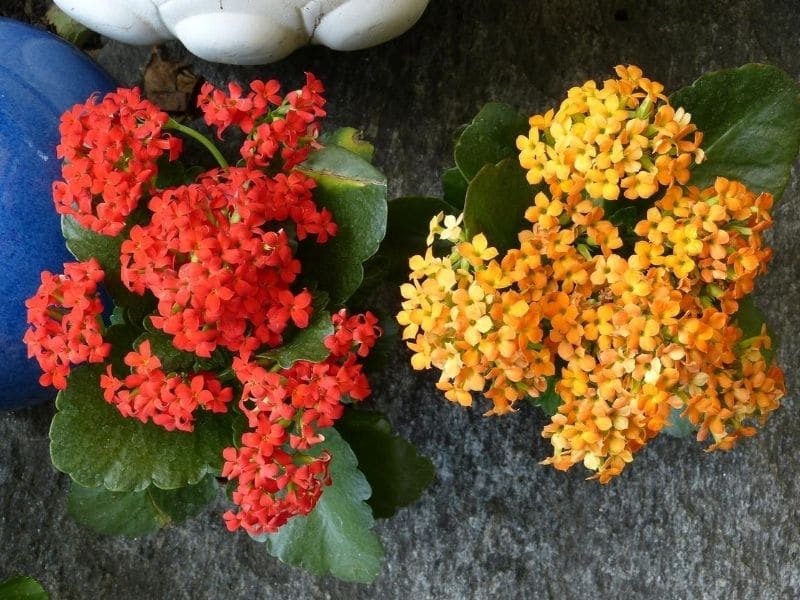
If you don’t have enough outdoor space, then you are lucky because Calandiva loves to be in the dark; thus, they prefer short days with more than 14 hours without lights.
If you place your Calandiva indoors, make sure you take it out of the dark and place it near a light source once their buds start appearing.
Growing Calandiva Outdoors

Even though Calandiva will thrive best when placed indoors, you could still try planting them outdoors in a very shaded area. Make sure your soil drains well and is acidic; this way, your Calandiva will grow stronger and healthier.
If frost is expected where you live, try to place some mulch around the plants’ roots as a way of protecting it.
Frequently Asked Questions
Where can I find Calandiva succulents?
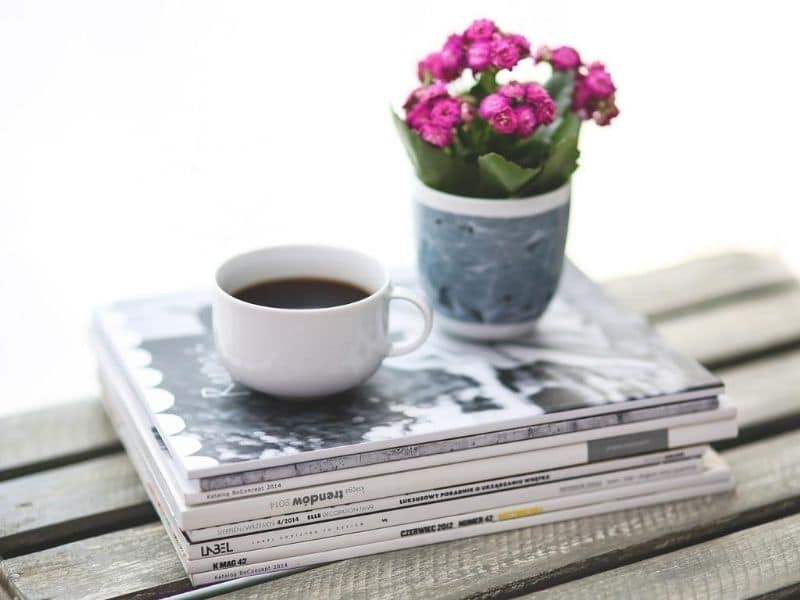
They are usually sold at nurseries or garden centers. You will find them throughout winter because it is when the plants tend to bloom.
Should I repot my Calandiva?
If your container is small and you just bought your Calandiva plant, you will eventually have to repot it into a bigger container. I recommend you do this once your plant finishes blooming. Otherwise, you could affect their growth.
Will the Calandiva go dormant?

Yes, they will. In fact, if you bought it during the winter season, then your plant is likely to bloom until early spring. Then, the following fall, you will need to make sure your succulent is in a dark place if you would like it to bloom again.
You are doing this to protect your plant and give her enough strength to come out again and bloom during the following winter.
Conclusion
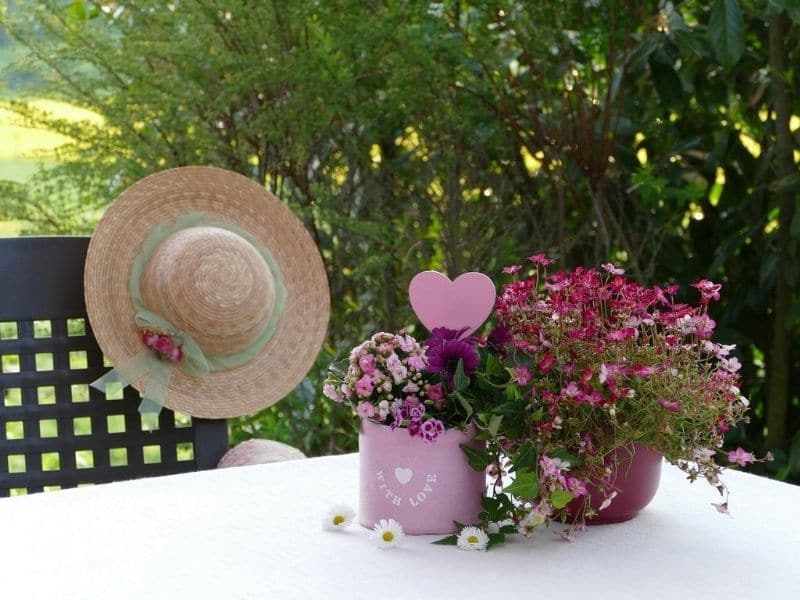
As you can see, Calandiva is one of the easiest plants to grow, regardless of whether you are a beginner or experienced gardener.
Calandiva succulents will also bring a lot of color into your home or garden. They are so beautiful and have so many different vibrant colors that all pollinators will come towards them as well! It is definitely worth having Calandiva succulent plants in your home!
Image: zen76/depositphotos

